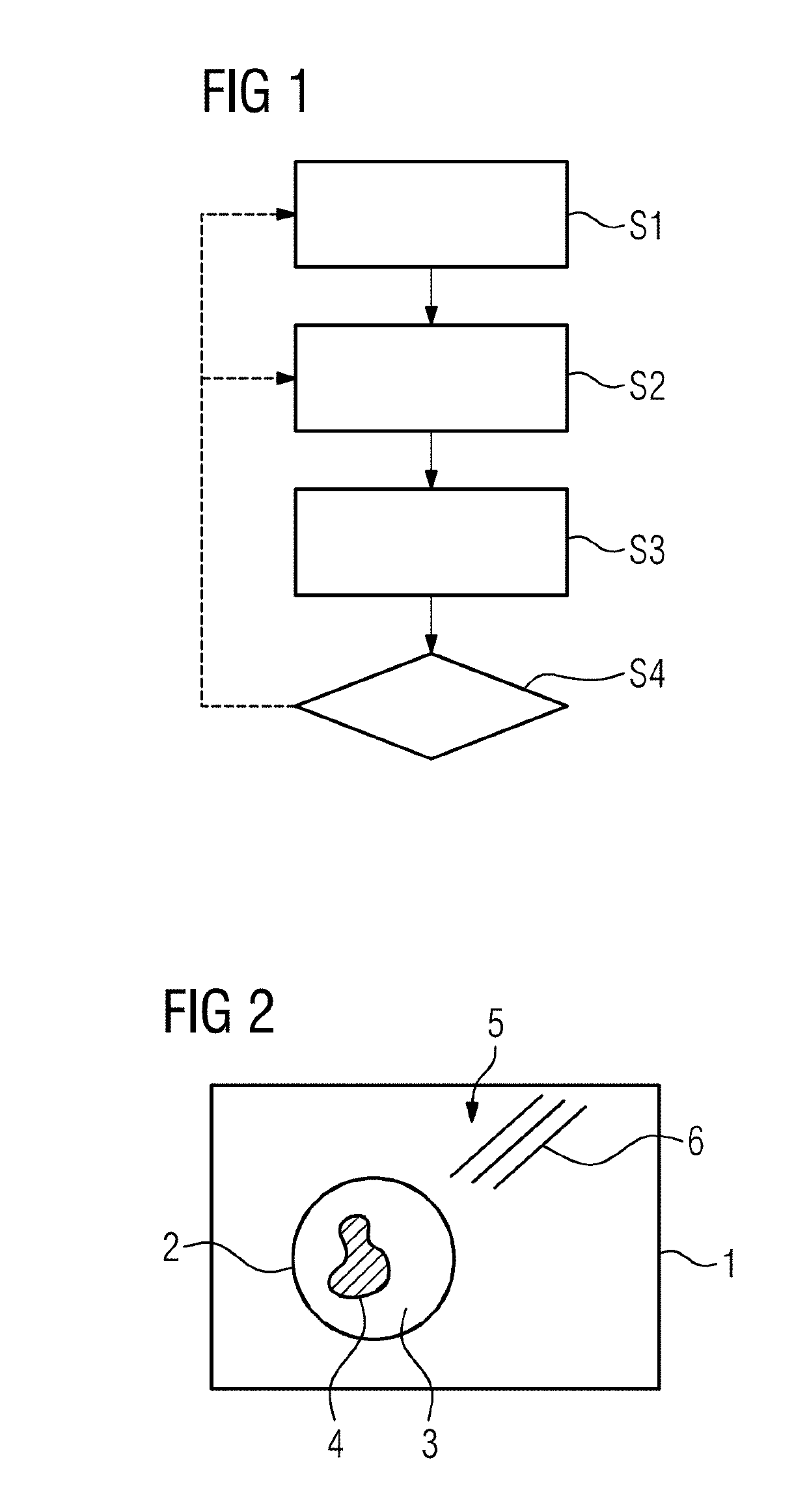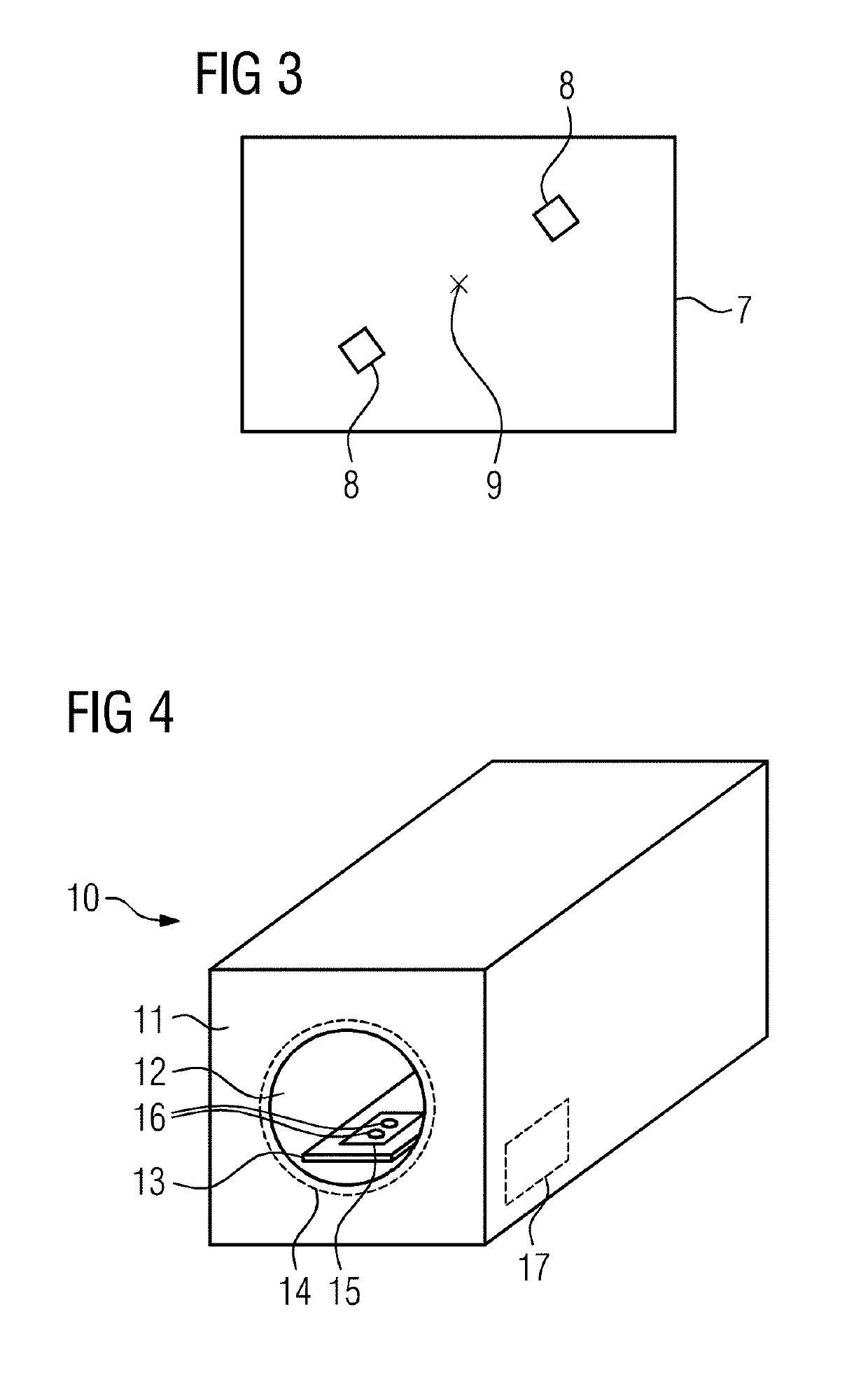Method and apparatus for reducing artifacts in a magnetic resonance image dataset
- Summary
- Abstract
- Description
- Claims
- Application Information
AI Technical Summary
Benefits of technology
Problems solved by technology
Method used
Image
Examples
Embodiment Construction
[0027]FIG. 1 is a basic flowchart relating to exemplary embodiments of the method according to the invention. It is assumed here that in a previous step, which is not shown, magnetic resonance data from parallel imaging using a local coil composed of multiple coil elements, i.e. multiple reception channels, has been acquired by radial sampling of k-space. For example, a GRASP sequence can have been used overall in this process. In particular magnetic resonance data from a body coil are also available here, which data are used, as is generally known, to determine sensitivity maps for each coil element, which can be included in a later step in the reconstruction of an image dataset.
[0028]Before reconstructing an image dataset or when it has been ascertained that the reconstructed image dataset contains too many artifacts, in particular streaking artifacts, magnetic resonance data potentially responsible for at least one artifact are identified in a step S1, in which process a check is...
PUM
 Login to View More
Login to View More Abstract
Description
Claims
Application Information
 Login to View More
Login to View More - R&D
- Intellectual Property
- Life Sciences
- Materials
- Tech Scout
- Unparalleled Data Quality
- Higher Quality Content
- 60% Fewer Hallucinations
Browse by: Latest US Patents, China's latest patents, Technical Efficacy Thesaurus, Application Domain, Technology Topic, Popular Technical Reports.
© 2025 PatSnap. All rights reserved.Legal|Privacy policy|Modern Slavery Act Transparency Statement|Sitemap|About US| Contact US: help@patsnap.com


